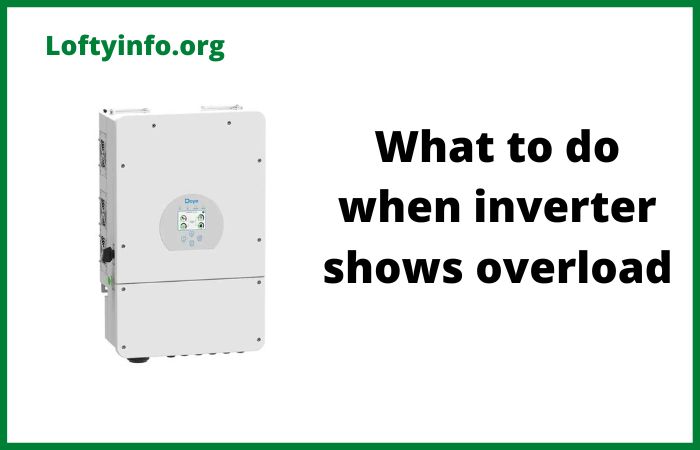How to Choose Solar System Type Wisely and Avoid Funds Wastage
The decision to invest in solar energy is a significant financial commitment that can transform your energy consumption and reduce electricity costs for decades.
Choosing the wrong solar system type can lead to substantial financial losses, underperformance and deep regret.
Many homeowners and businesses waste thousands of dollars by selecting inappropriate systems that don’t match their actual energy needs or installation conditions.
Understanding how to choose solar system type wisely and avoid funds wastage requires careful evaluation of multiple factors before making this long-term investment.
How to Choose Solar System Type Wisely and Avoid Funds Wastage
1) Understanding Your Energy Consumption Patterns
Before exploring solar system options, conduct a thorough analysis of your electricity consumption over the past twelve months.
Examine your utility bills to identify your average monthly usage in kilowatt-hours, peak consumption periods and seasonal variations.
This baseline data becomes crucial for sizing your system appropriately.
Many people make the costly mistake of overestimating their needs and purchasing oversized systems or underestimating and ending up with insufficient power generation.
Calculate your daily energy consumption by dividing your monthly usage by thirty.
Consider whether your consumption will increase in the coming years due to additional appliances, electric vehicles or family expansion.
A system that barely meets your current needs might become inadequate within a few years, forcing you to spend additional money on expansion.
Drastically oversizing your system based on unrealistic projections wastes capital that could be invested elsewhere.
2) Evaluating the Three Main Solar System Types
Solar installations fall into three primary categories, each with distinct characteristics, costs and applications.
Grid-tied systems connect directly to the utility grid without battery storage, making them the most economical option for areas with reliable electricity infrastructure.
These systems feed excess power back to the grid, often earning credits through net metering policies.
They provide no backup power during grid outages which can be problematic in regions with frequent blackouts.
Off-grid systems operate independently from utility infrastructure, relying entirely on solar panels and battery banks for power.
These systems suit remote locations without grid access or individuals seeking complete energy independence.
The substantial battery capacity required makes off-grid installations significantly more expensive, often costing twice as much as comparable grid-tied systems.
They demand careful energy management to prevent running out of power during extended cloudy periods.
Hybrid systems combine the benefits of both approaches, maintaining grid connection while incorporating battery storage for backup power and energy arbitrage.
These systems automatically switch to battery power during outages and can store electricity during low-rate periods for use during peak-rate hours.
While hybrid systems offer maximum flexibility and reliability, they represent the highest upfront investment and require more complex maintenance.
3) Assessing Your Property’s Solar Potential
Your property’s physical characteristics directly impact which solar system type will perform optimally.
Begin by evaluating your roof’s condition, age, orientation, and angle.
South-facing roofs in the Northern Hemisphere receive maximum sun exposure, while east and west orientations generate approximately fifteen to twenty percent less energy.
North-facing installations are generally inadvisable due to poor performance.
Examine shading patterns throughout the day and across seasons.
Even partial shading from trees, buildings or chimneys can significantly reduce system output.
A single shaded panel in a string configuration can diminish the entire array’s performance by up to forty percent.
Consider whether tree trimming or removal is feasible and cost-effective or whether ground-mounted systems might provide better sun exposure.
Roof structural integrity deserves careful attention since solar panels add considerable weight, typically three to four pounds per square foot.
If your roof requires replacement within the next decade, complete that work before installing solar panels to avoid the expensive process of temporary removal and reinstallation.
Asphalt shingle roofs last approximately twenty years, while metal roofs can last fifty years or more, making them ideal candidates for solar installations.
4) Calculating System Size Requirements
Proper system sizing represents a critical step in learning how to choose solar system type wisely and avoid funds wastage.
The calculation involves multiple variables including your energy consumption, local solar insolation rates, system efficiency losses and available installation space.
Solar insolation—the amount of solar radiation reaching your location, varies significantly by geography and season.
Start by determining how much of your electricity consumption you want to offset.
A one hundred percent offset eliminates utility bills but requires maximum investment while a seventy to eighty percent offset significantly reduces costs while maintaining grid connection for backup.
Divide your desired annual production by your location’s average sun hours per day and the expected system efficiency (typically seventy-five to eighty percent when accounting for losses).
For example, if you consume thirty kilowatt-hours daily and receive five peak sun hours, you need a six to seven kilowatt system assuming standard efficiency losses.
If you’re in a region with only four peak sun hours, you’ll require a seven to eight kilowatt system for identical production.
Oversizing by ten to fifteen percent accounts for panel degradation over time and provides buffer capacity.
5) Analyzing Financial Incentives and Payback Periods
The economic viability of different solar system types varies dramatically based on available incentives, local electricity rates and financing options.
Research federal tax credits, state rebates, local utility incentives and renewable energy certificates that can reduce your net investment by thirty to fifty percent.
Some jurisdictions offer additional benefits for battery storage systems, making hybrid installations more financially attractive.
Calculate the payback period for each system type by dividing the net cost after incentives by your annual electricity savings.
Grid-tied systems typically achieve payback within five to eight years in sunny regions with high electricity rates while off-grid systems may never fully pay for themselves from a purely financial perspective.
Off-grid systems provide value beyond economics for properties where grid connection costs exceed solar installation expenses.
Compare financing options including cash purchases, solar loans and power purchase agreements.
Cash purchases offer the best long-term returns but require substantial upfront capital.
Solar loans spread costs over time while maintaining ownership benefits and incentive eligibility.
Power purchase agreements require no upfront investment but transfer ownership and some benefits to third parties, often resulting in lower overall savings.
6) Selecting Quality Components and Installers
Component quality dramatically affects system performance, longevity, and maintenance costs.
Premium solar panels with twenty-five-year performance warranties typically degrade less than half a percent annually, while budget panels may lose one percent or more yearly.
This difference compounds significantly over decades.
Similarly, inverter quality determines system reliability, with string inverters lasting ten to fifteen years and microinverters often lasting twenty-five years.
Battery selection proves critical for off-grid and hybrid systems.
Lithium-ion batteries offer superior cycle life, depth of discharge and efficiency compared to traditional lead-acid batteries, despite higher initial costs.
A quality lithium battery system can last fifteen years with minimal maintenance, while lead-acid batteries typically require replacement every five to seven years, ultimately costing more over the system’s lifetime.
Installer expertise determines whether your system performs as designed.
Research potential installers thoroughly, examining licenses, certifications, insurance coverage, references and online reviews.
Request detailed proposals from multiple contractors, comparing not just price but also equipment specifications, warranty terms and projected performance.
The cheapest quote often indicates substandard components or inexperienced installation that will cost more through poor performance and premature failures.
7) Planning for Future Expansion and Maintenance
Design your system with future expansion potential to avoid costly retrofits.
Ensure your inverter capacity exceeds your initial panel capacity by twenty to thirty percent, allowing additional panel installation without replacing the inverter.
Plan conduit paths and mounting structures that accommodate extra panels.
This foresight proves especially valuable as panel prices continue declining, making expansion increasingly affordable.
Establish a maintenance schedule appropriate for your system type.
Grid-tied systems require minimal maintenance, primarily annual cleaning and visual inspections.
Off-grid and hybrid systems demand more attention, including regular battery monitoring, equalization charging for lead-acid batteries and connection inspections.
Budget for inverter replacement at the ten to fifteen-year mark and panel cleaning services if you’re in dusty environments.
Understanding how to choose solar system type wisely and avoid funds wastage ultimately requires balancing technical requirements, financial constraints and personal priorities.
Take time to thoroughly evaluate your situation, consult multiple experts, and resist pressure to rush into decisions.
The solar system you install today will influence your energy costs, environmental impact and property value for decades.
Making an informed choice now prevents expensive mistakes and ensures your solar investment delivers maximum returns throughout its operational life.
Why Some Inverters Cannot Power Load Directly From Solar Panels Without Battery
3176 cat engine complete technical specs
Complete 146 john deere loader specs
How to make solar generators last longer
Critical mistakes to avoid when connecting solar panels in series






